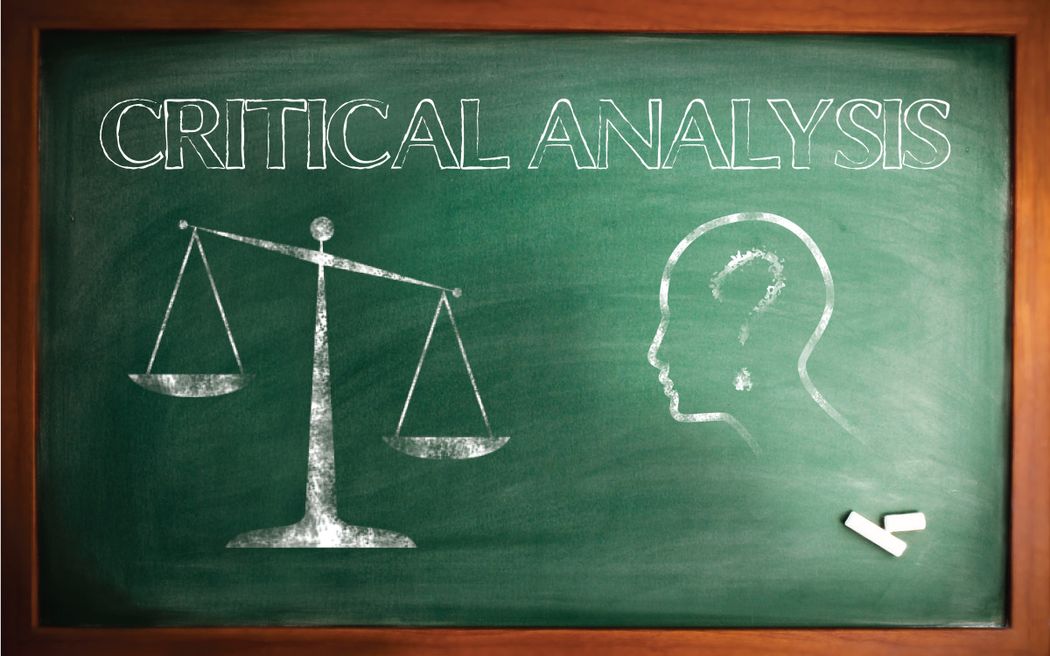You’ve flipped the exam page to the essay question: you’re asked to critically analyse your prescribed text. What on earth does this mean? While a critical analysis can seem like an intimidating form of writing, once you understand what is required and how to put it all together, you should be able to nail it! We will explore those two things, including the key considerations when asked to critically analyse and how you might structure a critical analysis essay response.
What actually is ‘critical analysis’?
A critical analysis involves the combination of three key skills: critical reading, critical thinking and critical writing. As Browne and Keeley described, critical analysis involves deconstructing what you read, write and listen to in a rational and logical manner (2012).
We can start by asking what is required of a traditional ‘analysis’. NESA’s trusty glossary of key words sheds some light on this:
- Analyse: Identify components and the relationship between them; draw out and relate implications.
This is definitely a good start, but it seems the ‘critical’ component would demand something more… If we think about what the word ‘critical’ means we can implicate the requirement to criticise or offer our own critique. In this sense, you can think of a critical analysis as a form of evaluation. Once again if we look to NESA’ definition:
- Evaluate: Make a judgement based on criteria; determine the value of.’
NESA puts the cherry on top and provides us with the following definition:
- Critically (analyse/evaluate): Add a degree or level of accuracy depth, knowledge and understanding, logic, questioning, reflection and quality to (analyse/evaluate)
From this, it is clear that a critical analysis demands higher order thinking - it goes beyond a mere description and requires a deeper, nuanced and personal understanding. Traditionally, it will involve evaluating or analysing someone else’s work. This means that you will have to offer your own reading or interpretation. As I identified earlier, the critical nature of the response implies a critique however your response must be supported by primary evidence (and often extended reading that considers the critiques of others).
Key considerations:
When you are reading and examining your text/ body of work, consider the following:
- What are the key concepts and ideas that the author raises or implies?
- What are the implications of these ideas?
- How does the comparison of issues and perspectives challenge your understanding?
- Does the author make assumptions or generalisations? How is this related to context?
- How do your own biases or context influence what you see, read, hear and think?
- How can you link different subjects to synthesise your own informed ideas and form a unique perspective?
Putting it all together
You will often be required to present your critical analysis in the form of an essay. Our guide on ‘how to write the perfect essay’ provides a solid framework. It is important that you present your critical analysis in a clear, concise and logical manner. It’s easy to fall into the trap of over-complicating it all… but as we always say: ‘KEEP IT SIMPLE.’ The following framework should help make this easier:
Critical reading
Critical reading is paramount to ensure you can form your own deep understanding of the subject.
Read carefully and consider how the author uses certain techniques to convey their ideas/ perspective.
Identify the author’s thesis, purpose, rhetorical devices and how their context affects biases and assumptions. When noting these things, you should have the following in mind:
- Audience: who does the author have in mind?
- Language and rhetoric: what language features does the author use to persuade the audience?
- Form: how does the author’s form (i.e. feature article, novel, poem) influence how certain concepts are portrayed?
Make notes as you go and consider extending your reading to other critical perspectives to inform your own opinion.
Critical writing
This is where you have to consider your view. The purpose here is to provide an analysis of someone else’s work, not a recount of what they said but rather what you make of it. This is subjective, but you still need evidence to support what you are saying.
Unless you are advised otherwise, you should write in third-person and adopt a more formal tone. This gives your work a sense of authority and legitimacy - the reader believes your work is fact, rather than simply your opinion.
Start by making an essay outline or plan, considering what your thesis and argument will be.
Introduction
Summarise the author’s purpose/ aim, main ideas and how this is conveyed through certain techniques (style, language, form etc).
Signpost your structure and arguments to support your own thesis.
Body
The body of your essay consists of paragraphs, each a building block in the construction of your argument. You want to use the body of your essay to answer the question through added detail and sophisticated reasoning of related evidence.
Use targeted topic sentences that argue your thesis with evidence to support. The evidence is form the bulk of your critical analysis. I strongly recommend that you put together a bank of active analysis verbs that will bolster your analysis and ensure you are not just describing a text or recounting the plot. Here are a few to get you started: strengthen, assert, elicit, characterise, imply, validate, underline, allude, emphasise.
Always remember link that evidence back to your point, your thesis and finally the question!
Conclusion
You’ve said a lot, now is your opportunity to bring it all together. Be clear and concise. Your conclusion should not just be a repeat of the introduction. You should also avoid introducing new content, ideas or evidence although you might want to make your essay more thought-provoking by offering some food for thought for the reader (of course, related to what you have already said).






